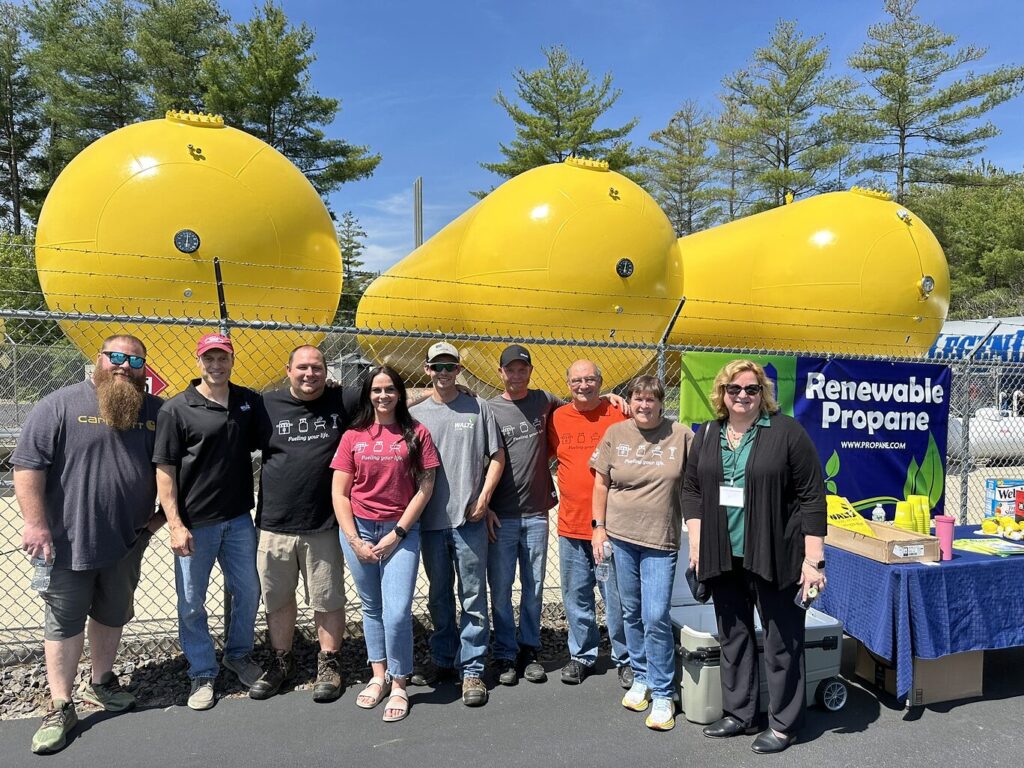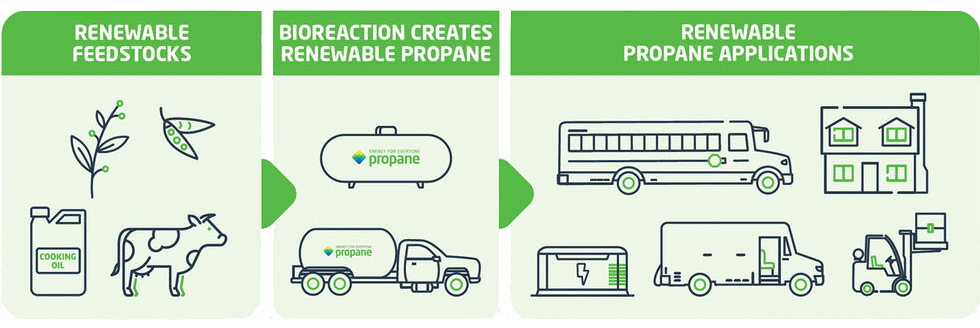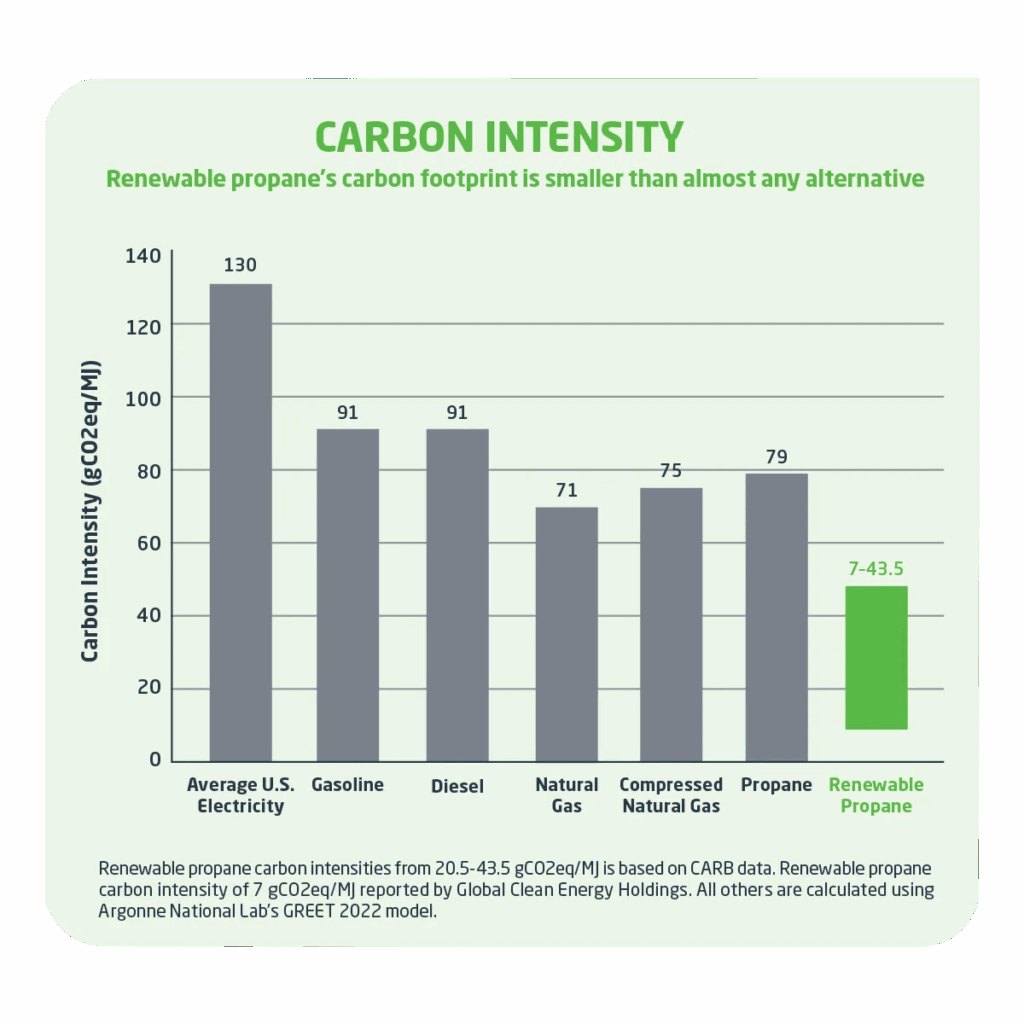
We are looking back to a year ago when we became the 1st propane supplier in Maine to receive a load of Renewable Propane to be used in residential applications. For those that missed our event news, or who are interested in learning more about Renewable Propane here are some common questions with answers. Thank you to Propane Education & Research Council for providing such great information.
What is Renewable Propane?
Renewable propane has the same great features as conventional propane – reliability, portability, power and reduced carbon emissions – but with even lower carbon emissions when compared with other energy sources.

Unlike conventional propane, renewable propane can be made from a variety of renewable feedstocks. The most common form of renewable propane today is a by-product of renewable diesel and sustainable aviation fuel made primarily from plant and vegetable oils, animal fats or used cooking oil.
How is renewable propane cleaner than conventional propane?
Renewable propane’s carbon intensity – or the carbon emitted for every unit of energy it produces – is lower than conventional propane because its produced from bio-based or renewable sources.

What kind of plant stock is renewable propane made from?
More and more renewable propane is being generated from the seed oil of the camelina plant. Also known as camelina sativa or false flax, camelina is a member of the mustard family and a relative of cabbage, kale and cauliflower, but is not a food crop nor does it compete with food production.
Is renewable propane made from camelina cleaner than the grid?
Renewable propane made form camelina oil has a lower CI score than the electric grid in 49 states, and renewable propane made from non-camelina oil feedstocks has a lower CI score than the electric grid in 45 states.
How does renewable propane compare with other energy sources?
The carbon intensity of renewable propane depends on the feedstock, but its lower than many other energy sources. For instance, according to the California Air Resources Board (CARB), renewable propane made with domestic, non-rendered, used cooking oil has a carbon intensity score of 20.5 [grams CO2 equivalent per megajoule or gCO2eq/MJ], whereas conventional propane has a carbon intensity score of 79, lower than most other energy sources. 7 gCO2eq/MJ is being claimed by Global Clean Energy, producer of camelina; however, that has not been certified by the Environmental Protection Agency or CARB yet.
If you’d like to read the entire article on Renewable Propane featured in BPN magazine this month follow this link.